Order: Passeriformes. Family: Fringillidae
Description
The Brimstone Canary is 15–16 cm in length with a heavy bill, which is short, conical and very stout at the base. The bill is light brown with a pinkish or yellowish base. The legs and feet are pinkish-brown. It has yellow-green upperparts with dark green streaking, yellow-green ear coverts and malar stripe, and two yellow wing bars. The underparts are yellow, with a greenish wash on the flanks, and breast.
The sexes are similar, but the male is brighter, with a bigger bill, better defined face pattern, brighter yellow wing bars and a greenish rump.
Young birds are duller, greyer and less yellow below than the adults.
Northern birds are paler more yellow.
Southern birds (in the Western and Eastern Cape) are more dull olive-green with dark streaked upperparts. They differ from the Yellow Canary in lack of white edges to wing coverts, and their dark crown extends to the base of the bill. Yellow Canary has a supercilium that is much longer and does not narrow so quickly behind the eye.
Similar species: The Brimstone Canary can be confused with the Yellow-fronted Canary, but that species is smaller billed with a much more defined head pattern and a bright yellow rump.
Distribution
Occurs in patches from Uganda through southern and eastern DRC, Tanzania, Angola and Zambia to southern Africa. Here it is fairly common in Zimbabwe, Mozambique, Swaziland and eastern and southern South Africa, from Limpopo Province south to KwaZulu-Natal and west to the Western Cape.
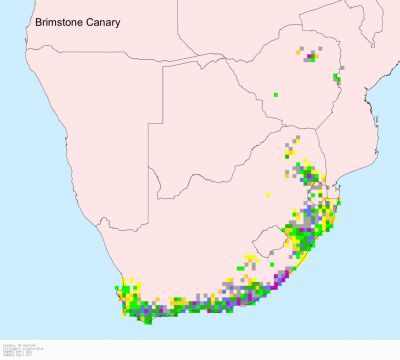
Subspecies
There are three subspecies.
C. s. sulphuratus is the nominate race of southwestern and southern Cape Province.
C. s. wilsoni of eastern Cape Province to southern Mozambique is smaller, relatively smaller billed, and paler or more yellowish green than the nominate form. The underparts are entirely yellow.
C. s. sharpii of northern Mozambique to Kenya is smaller and paler or more yellowish green than the nominate form. Its bill size is intermediate between the other two races.
Habitat
It generally prefers thickets, edges and clearings in coastal forest, montane shrubland, old croplands, gardens and edges of alien tree plantations.
Diet
It mainly eats seeds and fruit supplemented with insects and nectar, doing most of its foraging on the ground and in the vegetation of trees and bushes.
Breeding
Monogamous, territorial usually solitary nester, although it may breed in loose colonies of up to 6 nest spaced 5-20 m apart. The nest is built solely by the female, consisting of a cup of grass, fine twigs, weed stems, tendrils from everlastings (Helichrysum), leaf petioles, roots and hair and lined with plant down, wool, seed appuses and other soft material. It is typically placed in the fork of a bush or tree with sparse foliage, such as tall Euphorbia and alien pine trees (Pinus), anywhere from about 1-6 m above ground. Egg-laying season is from July-March, peaking from August-October. It lays 2-4 eggs, which are incubated solely by the female for about 12.5-17 days, while the male regularly feeds her at the nest. For the first four days the chicks are fed by the female with food provisioned by the male, after which both sexes feed them. The young eventually leave the nest at about 14-21 days old, remaining dependent on the adults for food for some time afterwards.
Call
Sustained trills and whistles interspersed with harsh chirrups and chirrs. Listen to Bird Call.
Status
Fairly common resident.



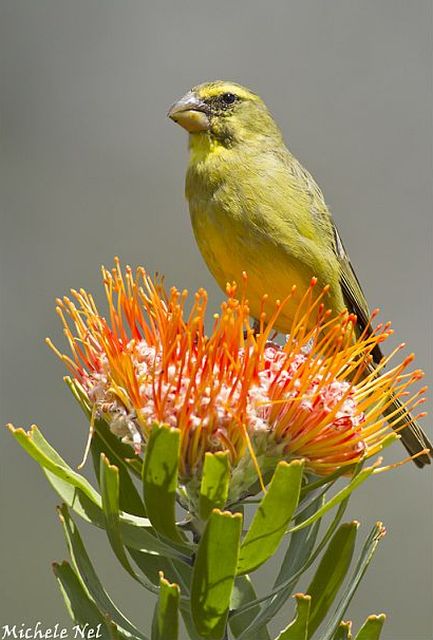
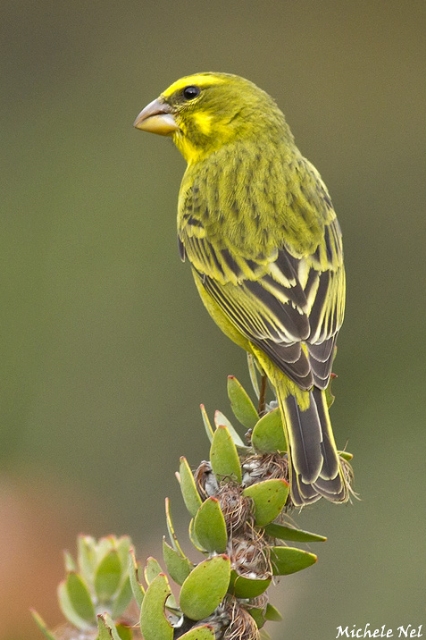
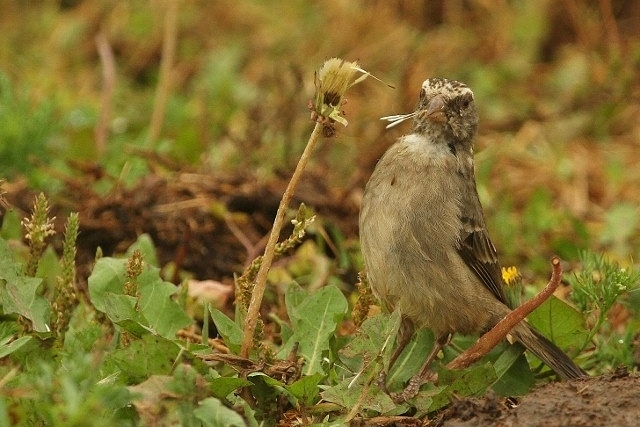 © nan
© nan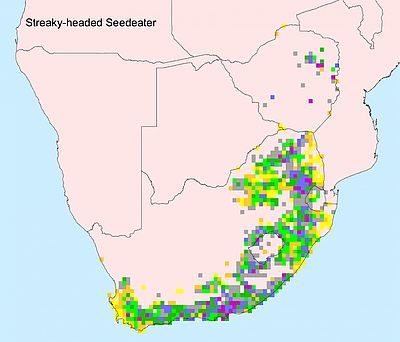
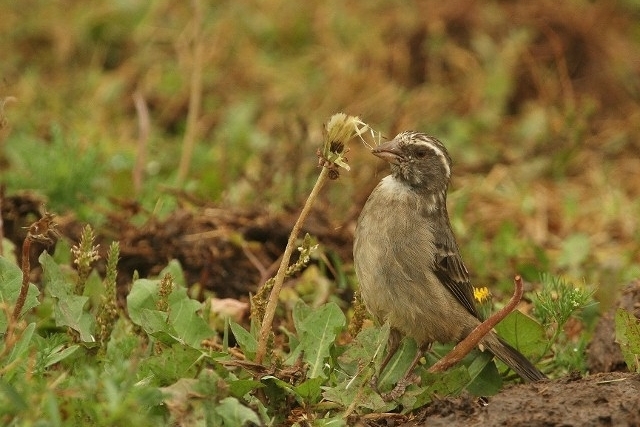 © nan
© nan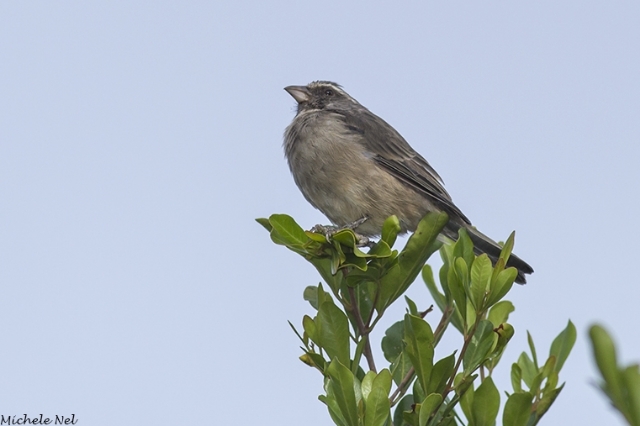 © Michele Nel
© Michele Nel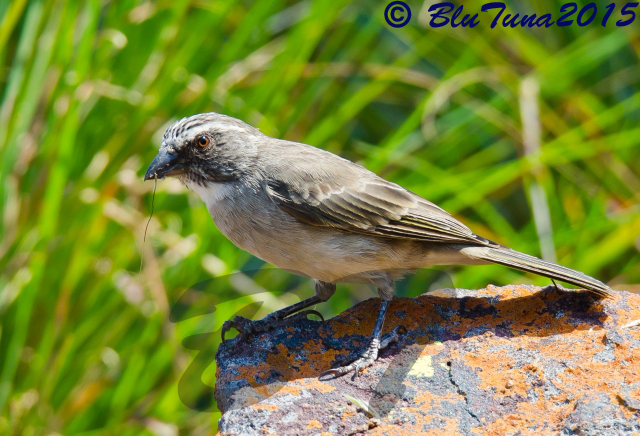 © BluTuna
© BluTuna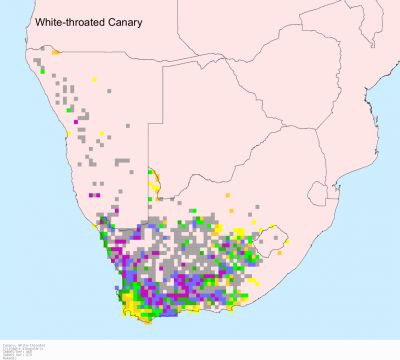
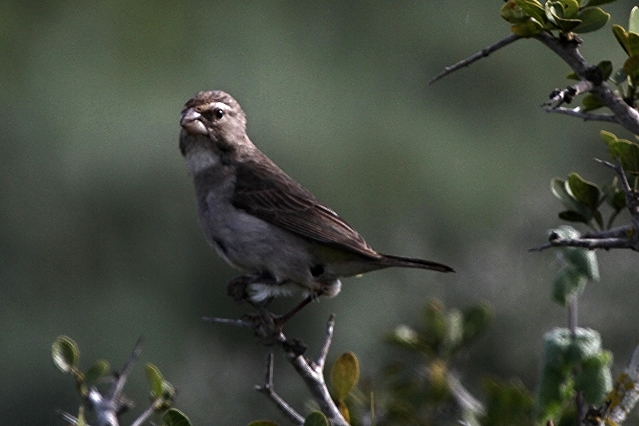
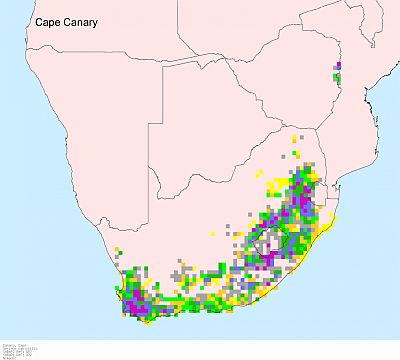
 © Michele Nel
© Michele Nel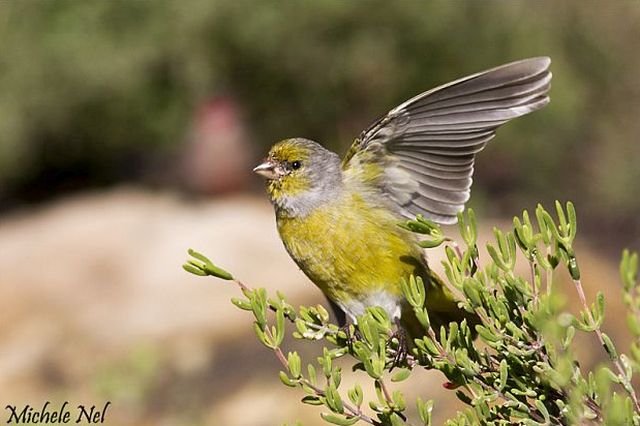 © Michele Nel
© Michele Nel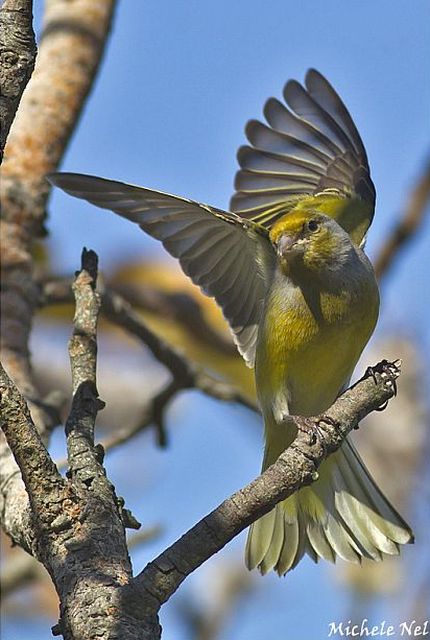 © Michele Nel
© Michele Nel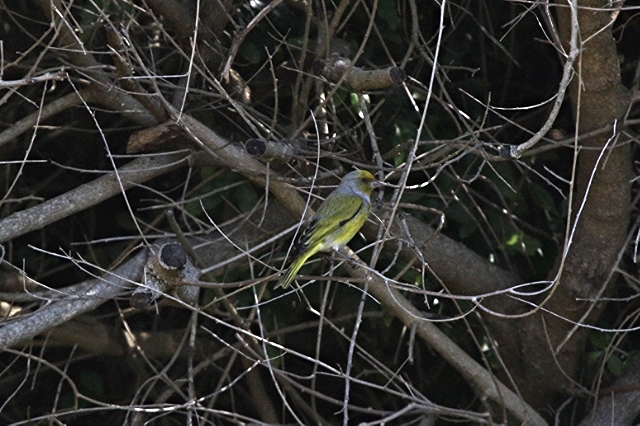 © Tina
© Tina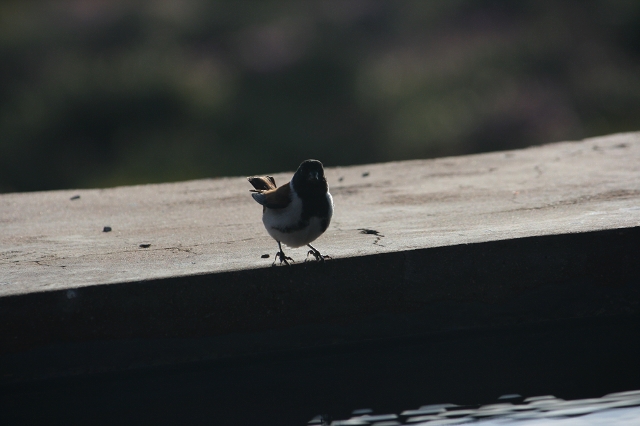 © Tina
© Tina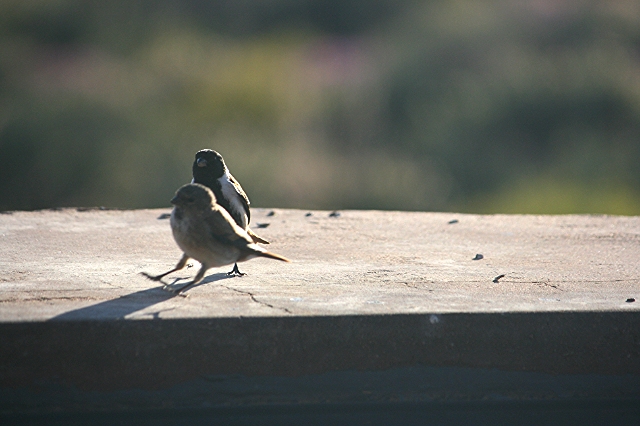 © Tina
© Tina